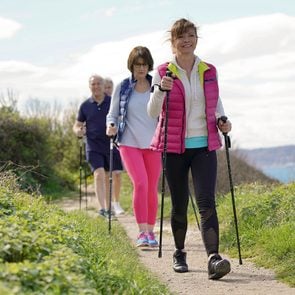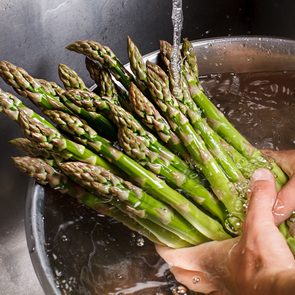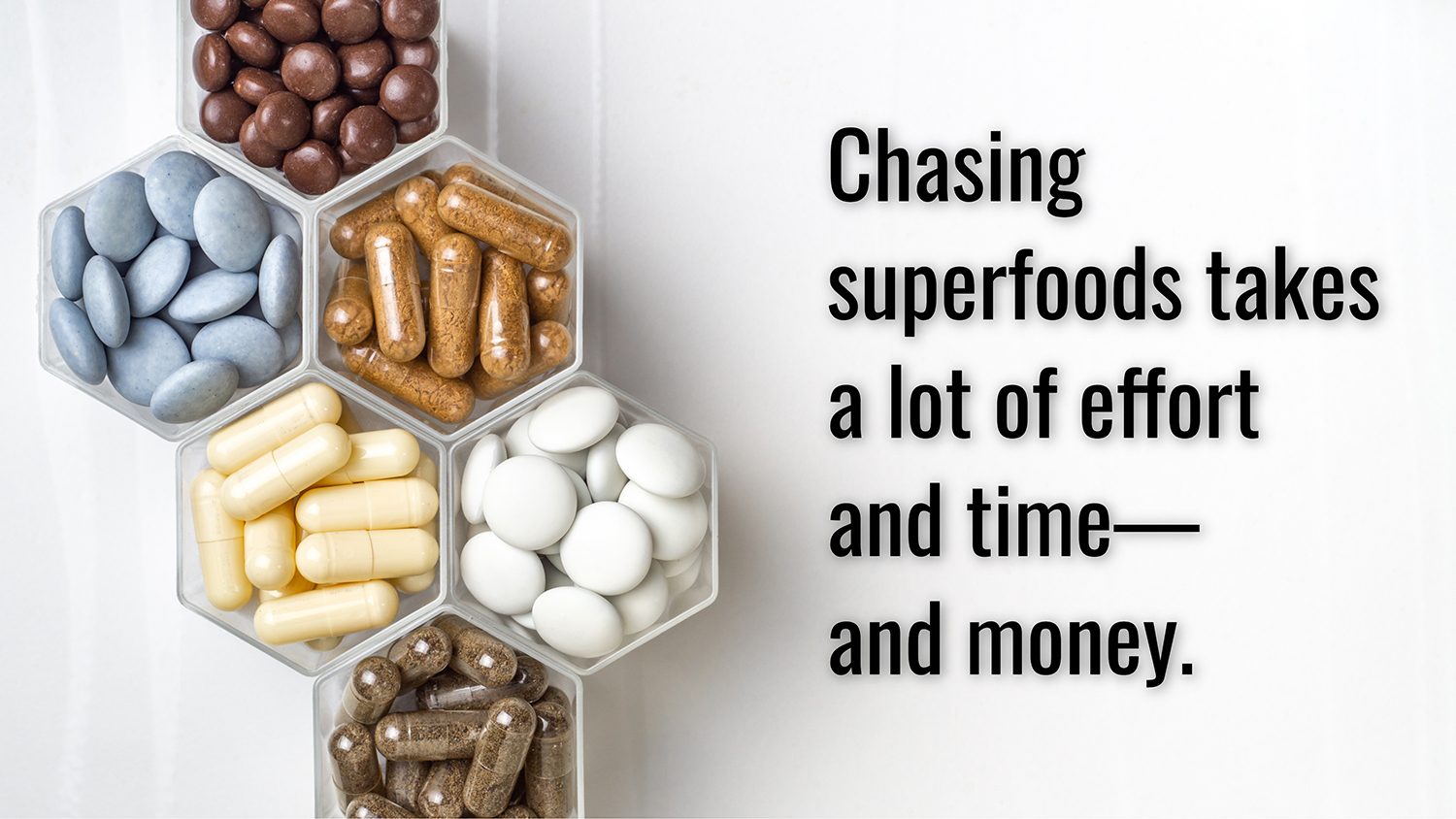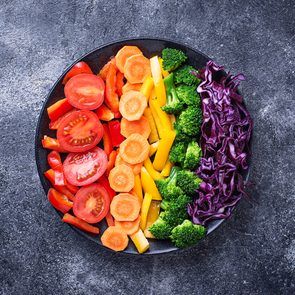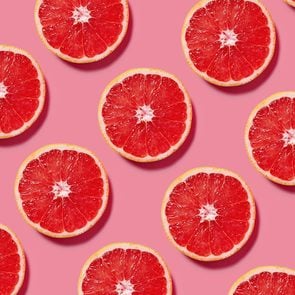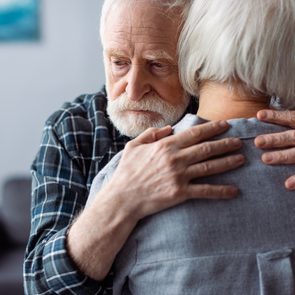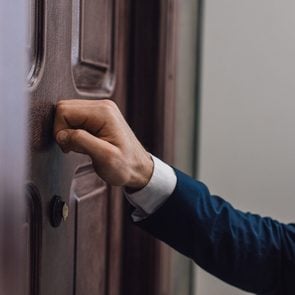Thirty minutes of moderate exercise, five times a week for good health—or so the mantra goes. But what’s “moderate exercise” for walkers? While walking 10,000 steps a day has become a popular fitness goal, and pedometers can track the number of steps we take, they’re missing one key piece of the puzzle: they give no information on how intensely we’re exercising.
To help, researchers at San Diego State University say that for walking to constitute “moderate exercise,” we should aim for at least 100 steps a minute. “This threshold is the absolute minimum,” says Dr. Simon Marshall, associate professor at the university’s School of Exercise and Nutritional Sciences.
Getting the Most Out of Your Daily Walk
Walkers trying to increase their fitness need to push even harder. “One hundred steps will help cardiovascular health and lower your risk of some cancers, but to improve fitness and aerobic capacity more intensity is needed,” Marshall says.
March to the Beat of That Drum
Considering most pedometers won’t calculate steps per minute, what’s the best way to ensure you’re reaching that fitness goal? Marshall has a back-to-basics solution that may also help put pep in your step: Use the beat of a favourite song to set your pace. “If you walk in time to a song with 100-105 beats per minute (bpm), you can match each step to the beat.”
What does 100 beats per minute sound like in pop music terms? The Bee Gee’s “Stayin’ Alive” at 103bpm is “an ideal tempo to keep you close to moderate intensity”, he says. Also good are Justin Timberlake’s “Rock Your Body” and U2’s “Still Haven’t Found What I’m Looking For“. So program that playlist, pop in those earbuds, and get walking!
Now that you know the ideal pace to max out the health benefits of your daily walk, check out 10 easy exercises that’ll keep you fit.

Welcome to Miramichi, New Brunswick
Miramichi is the largest city in northern New Brunswick and sits at the mouth of the Miramichi River, which runs through the Miramichi Valley, the second longest in the province. With a population of almost 18,000 people, Miramichi is known for its friendliness and hospitality. While walking here, you may be greeted with a smile and the ever-popular saying, “How’s she going?” to which the local response would be, “The very best!”
Miramichi is home to many people of Irish descent. Family names like Doyle, Lynch, Rogers, McCarthy and, yes, Sweeney, are sprinkled in and around our lovely city, which also embraces the community of Chatham and Middle Island. Situated about two kilometres east of Miriamichi, the small island is now the site of Middle Island Irish Historical Park, which memorializes the tragic past surrounding the arrival of Irish immigrants to the region in the mid 1800s.
In 1847, many people emigrated from Ireland in desperation because of the “Potato Famine” of 1845 to 1849. Ships were overcrowded with passengers hoping to find the strength and courage needed to build a better life for themselves and their families across the ocean in Canada.
Misfortune overtook many vessels as passengers became ill with typhus and scarlet fever. One ill-fated ship was The Looshtauk, which was built in 1845 in St. John County, New Brunswick. In 1847, she set sail from Quebec to cross the ocean and pick up a full load of passengers fleeing the potato famine and return with them to Quebec.

An Ill-Fated Voyage
Unfortunately, the return crossing did not go as anticipated. Safe passage on the vessel was not meant to be, as passengers became violently ill. As a result of the turmoil on board, a decision was made to dock in Miramichi at a small island by the name of Middle Island. Upon arrival, it was found that conditions weren’t good, the situation was dire and the ability to provide medical attention was very limited.
Middle Island was put to use as a hospital and quarantine station for the unfortunate immigrants. A young doctor by the name of John Vondy decided to close his practice in nearby Chatham and devote his time and knowledge to caring for the sick and dying on the desolate island. Sadly, Dr. Vondy succumbed to the same disease that plagued those in quarantine and died not long afterwards. Records show that out of the 462 desperate souls who began the journey aboard the Looshtauk, 146 perished on board the ship. After having reached Middle Island, unfortunately due to lack of medical personnel and care, 96 more lost their lives to disease. Among the survivors, 23 Irish immigrants sailed to Quebec and the remaining 167 people settled in nearby Chatham.

Visiting Middle Island Irish Historical Park
Today, the walking trails of Middle Island Irish Historical Park provide beautiful scenery and relaxation on every visit. Monuments dot the island in remembrance of the past, and etched in the stone are facts and stories from years gone by, bringing to the reader a slight inkling of what life was like during those tragic times.

In the summer of 2019, a mural was completed on the building housing the park’s restaurant. Created by local artist Allie Howe, it depicts what the island may have looked like as the Looshtauk sailed into the Miramichi River all those years ago.
The park hosts a number of crowd-pleasing annual events during the summer, including Irish Festival Sunday—a celebration of all things Irish and great family fun. A must-see is traditional Irish dance, which is performed by a group called “The Nelson Doyle Dancers.” The troupe has been in existence for more than 25 years and is led voluntarily by a dedicated lady named Ellen Doyle. Over the years, Ellen has inspired hundreds of children and young adults, ranging in age from four to 20, to learn Irish dance and culture. The youthful participants also learned a bit about the Gaelic language, which made things quite interesting at times!
Regardless of the sad past, it is always a pleasure to sit quietly in Middle Island Irish Historical Park and look out over our majestic river, thoughts drifting to what life may have been like during those troubling times. Middle Island is now a place of peace and tranquility to be enjoyed by generations for years to come.
Check out more historical landmarks every Canadian needs to visit.
Holding in farts
A man went to his girlfriend’s house to have dinner and meet her mother for the first time. Unfortunately, the food didn’t agree with him, and he felt gas welling in his stomach. Not wanting to offend a potential mother-in-law, he held the fart in—and died the next day due to complications of the retained gas. At least that’s how the viral story goes. But like many strange tales on the Internet, this one is likely false, says to fact-checking site Snopes.
People generally don’t die just from holding in a fart, even if it’s a big one, says gastroenterologist Niket Sonpal, MD, an internist and faculty member at Touro College of Medicine in New York City. That’s not to say you won’t experience some ill effects from trying to keep your gaseous emissions in. And you don’t want to make it a habit, he says.
Why farts happen
Flatus, the official name for farts, happens when gases in the intestine are released through the rectum, a process that can range from characteristically loud to infamously “silent but deadly.” Farting is generally painless and often provides a sense of relief.
There are several ways gas ends up in your intestine. The most common type, called endogenous gas, is a byproduct of the digestion process. Food travels to the large intestine, where bacteria ferments it, producing gas.
Gas is sometimes produced when stomach acid interacts with food in the small intestine. Some foods produce more gas during the digestion process than others. Beans are known culprits, but other foods that can cause gas are high-fibre foods like broccoli and prunes, sulfurous foods like onions, sugar-free foods containing sugar alcohols, and inflammatory foods like dairy and gluten, says Trista Best, a registered dietitian at the Whitfield County Health Department in Dalton, Georgia.
Certain behaviours can contribute to gas, like eating too quickly, says Best, who is also a consultant with Balance One Supplements. You can also trap gas in your intestines through swallowing air—usually by breathing through your mouth, drinking soda, smoking, or chewing gum, says Dr. Sonpal. (Find out more surprising things your farts can reveal about your health.)
Regardless of the source, when there is too much gas in the colon, it puts pressure on the colon wall and triggers the flatus reflex.
Normal farts contain a mixture of nitrogen, hydrogen, methane, and carbon dioxide gases. Depending on the food you ate and the type of bacteria in your gut, they may contain other gases, including sulfur, which gives them that “rotten egg” smell that can really clear a room.
Everyone farts
While some people brag about never farting, the truth is that everyone does it—and there’s a wide range of what’s considered normal and healthy. The average person produces about 705 millilitres, or 24 ounces, of gas in 24 hours. But the amount can range from 476 millilitres (16 ounces) to 1,490 millilitres (50 ounces), according to a study published in Gut.
To determine these numbers, scientists recruited 10 healthy adults and had them eat half of a can of beans in addition to their regular diet. Over the next day, they measured their gas using a rectal catheter (which was likely as pleasant as it sounds—the things people do for science).
They found that men and women both farted about eight times a day, although passing gas up to 20 times a day is normal. Large farts were most common in the hour after meals, and the subjects released half as much gas while sleeping as they did while awake.
Some illnesses can make you pass gas more than normal. Health conditions such as irritable bowel syndrome, lactose intolerance, food poisoning, celiac disease, and gastroesophageal disease all have increased gas as a common symptom, says Dr. Sonpal. If you feel like you are farting more than usual and have other symptoms, like pain, diarrhea, constipation, or a fever, you might want to speak with your doctor. (Here are 20 symptoms you should never ignore.)
What happens when you hold in a fart?
So what do you do if you are in a situation like, oh, meeting a future in-law or giving a presentation in an important meeting and you don’t want to let a fart fly? Thankfully, the rectum is a sphincter, and you can override the urge to pass gas and hold it in indefinitely.
How long you can hold it varies from person to person and day to day. “It’s tough to say how long you can hold in a fart since that depends on several factors, including what foods you are eating, hormonal activity, and medical conditions,” says Dr. Sonpal.

Problems with holding it in
Holding it in keeps the gases trapped in your intestines, where they will continue to build up and put pressure on the colon wall until you find a way to release them.
“Holding your gas usually won’t lead to adverse health effects or damage,” says Dr. Sonpal. “However, it is better to release your farts than hold them in.”
Here are some of the downsides:
Pain
Perhaps the most common side effect of holding a fart in is that the increased pressure in your gut can become painful. It can range from a dull ache to sharp, stabbing pains.
Bloating
Bloating occurs when gases are trapped inside your intestines, distending your belly. Not only can it make you look several months pregnant (regardless of gender), but it also can make you feel uncomfortable in your clothing and self-conscious.
Mouth farts
Sometimes it seems as if a fart just disappears on its own. This is because your body can reabsorb the gases, at least temporarily. But they will find a way out, if not through flatulence then through belching or being exhaled in your breath, according to a study published in Digestive Diseases and Sciences. Yes, you read that right: your farts can come out through your mouth.
Diverticulitis
A repeated habit of holding in gas could possibly lead to diverticulitis, a debilitating condition where pouches in the digestive tract, usually in the colon, become infected. The result: pain, vomiting, constipation, or abdominal tenderness, says Dr. Sonpal.
How to fart less
The best thing to do when you need to pass gas is to simply pass the gas. It may be noisy and/or smelly, but it is one of those bodily functions that should be normalized. You can’t eliminate flatus, but if you want to reduce the number of farts you produce, there are some things you can try:
Do an elimination diet
The first step to reducing your gas is to figure out what is causing it, says Best. Doing an elimination diet—totally eliminating common gas-causing foods from your diet for several weeks—can help you pinpoint which foods are the problem. Start by eliminating garlic, artichokes, apples, mangoes, prunes, cauliflower, and most gluten-containing products, she says. (Find out the sneaky things that can trigger IBS symptoms.)
Avoid trigger foods
Once you’ve identified the foods that cause you gas, make a plan to eat them less often or avoid them entirely.
Pop a supplement
Sometimes people become extra gassy because they lack the right bacteria or enzymes to digest their food completely, says Best. Taking a probiotic and/or digestive enzymes supplement may provide some relief.
Skip the gum and cigarettes
Anything that requires you to open your mouth repeatedly, like chewing gum and smoking, can cause you to swallow air, leading to increased gas.
Nix carbonated beverages
Some people find that drinking bubbly beverages causes their tummy to bubble. If that’s you, stick to drinks without carbonation. It’ll help reduce the gas in your stomach.
Eat smaller meals
Large, heavy meals can lead to an increased amount of gas being made at one time. Eating smaller meals throughout the day spreads out the digestive process and the gases produced.
Eat slowly
Inhaling your meal causes you to swallow air. The fix: eat slowly and mindfully, says Best.
Go for a walk after a meal
Exercise is known to help speed digestion and keep things moving through your intestines, says Best. Taking an after-dinner walk may help reduce gas and bloating, and it also gives you an opportunity to release it unobtrusively outdoors. (Here’s what happens when you start walking 10,000 steps a day.)
Do this yoga pose
There is a specific yoga posture called Pawanmuktasana or “wind releasing pose” that is designed to help you expel gas. Doing this before going somewhere public may help get the farts out of your system in private. Lie on your back, lift your legs, bend your knees and bring them towards your chest. Applying gentle pressure in this position may help release some gas.
Next, find out the sneaky reasons you’re always bloated.
We all struggle with finding supportive things to say to caregivers, especially when we feel as if there’s nothing that will make things better. However, speaking from a place of compassion, love and concern does help. You can acknowledge the situation without offering advice. Ask how someone is doing. Let them know that you genuinely care.
Start here with caregiver support:
- I can see how hard you are working.
- I see you are doing your best.
- I would love to drop off a meal for you. What do you like or not like?
- How are you?
- What can I do to help? (Suggest things like sitting with their loved one for an afternoon, bringing coffee or a meal, running an errand or getting groceries.)
- It is really hard when our loved ones are ill.
Be careful with:
- Offering advice.
- Sharing your own stories that mirror what they are going through.
- Saying, I know how you feel/what you are going through, etc., unless you really do know.
- Should, as in, What you should do is…
- Would, as in, What I would do is…
- You need to take care of yourself.
- You are a saint.
- You will get your rewards for this.
- I could never do what you do.
- You are so brave.
- They are so blessed to have you.
- God never gives us more than we can handle.
Kimberly Fraser, Ph.D., is a retired nurse and former professor of nursing at the University of Alberta. She ran a home health-care business in Edmonton and was the past president of the non-profit Caregivers Alberta.
Excerpted from The Accidental Caregiver, by Dr. Kimberly Fraser. Copyright © 2022, Dr. Kimberly Fraser. Published by Sutherland House Books. Reproduced by arrangement with the publisher. All rights reserved.
Next, Kimberly shares the powerful story of her own mother’s caregiving journey.

My husband, Roger, grew up in a family who loved and restored old cars. In his teen years, he had an old truck that he worked on. He sold it a few years after we were married, but always had plans to purchase another antique vehicle down the road. Last year his dream came true! Meet Betsy, our 1934 Ford 4-door sedan. She was originally from Saskatchewan and purchased by a fellow on Vancouver Island who has a love for buying and restoring old cars. Betsy was completely restored to her original state, and beautifully done! When Roger saw her, it was love at first sight.

Betsy is now a special part of our family. She loves to go for drives on beautiful summer days. When our son recently graduated from high school, Betsy was a big part of this very special day.

Roger will often be found taking friends and family for summer drives in Betsy (that’s him and his daughter pictured above). For the older generation, it takes them back to simpler times, when a Sunday afternoon drive was where it was at.
Betsy will always remain a special part of our family for generations to come. We look forward to many more happy outings with her!
Next, read the incredible story of how man missed out on his dream car as a teenager—then found it parked in his driveway 25 years later.
Take off work
Wednesday is a great day to take off, no matter how you spend it. If you choose to go out, you don’t have to worry about places being closed—or crowded. You can get those pesky errands out of the way and free up your weekend. Or you can do something fun with fewer people around. Even if you just stay in and recharge, you’ll return to the office on Thursday ready to finish out the week strong.
Do laundry
Along with Tuesdays and Thursdays, Wednesdays are the least busy days at the laundromat. Another bonus of getting your loads done mid-week: you’ll have your pick of outfits for the weekend!
Take a flight
Depending on your circumstances, Wednesday might not be the most convenient day to fly. But travel experts generally agree that Wednesday (and Tuesday) are the cheapest days to fly. The reduced airfare has to do with the fact that fewer people choose to fly on those days. So, having the entire row to yourself is another potential plus. (Just make sure to avoid these mistakes when booking your vacation online.)

Go grocery shopping
True, the stores are less crowded on Wednesdays. But they also tend to roll out their weekly discounts on that day. Some stores will still accept coupons from the previous week on Wednesdays, so that’s double the savings! And since grocery stores usually receive shipments early in the week, you’ll get the first pick of the fresher stuff. (Discover more grocery store secrets most people don’t know.)
Weigh yourself
Our weight naturally fluctuates throughout the day, and even more so throughout the week. For those of us working a typical 9-5, we usually weigh the least on Friday morning (after a week of routine), and the most on Sunday night (after a weekend of abandoning that routine). If you like to keep track of your weight, weighing yourself in the middle of the week will give you a more precise and consistent reading.
Go on a date
There are many advantages to a Wednesday date night. By mid-week, you’ve recovered from the whirl of the previous weekend. But you’re probably also craving some kind of reward for getting through the first three days of the work week. Many bars and restaurants offer price incentives on Wednesday to get people through their doors, like half-priced bottles of wine or appetizers. So, you’ll also get more bang for your buck.
Get married
If enough of those Wednesday dates go well, you might want to consider getting married on a Wednesday. The main draw here is the price (although it’s also supposedly good luck). Wedding vendors relish the opportunity to earn extra cash with a mid-week gig. Some venues offer as much as a 40 percent discount on “off-peak” days. But beyond the bill, getting married on a Wednesday also means you won’t be competing with other couples for your preferred photographer, DJ, etc.
Wear pink
Just kidding—unless you’re one of the Plastics from Mean Girls. (“On Wednesdays, we wear pink.”)
Next, find out the best time to buy a new car.
A 55-year-old Indian national living in Canada, let’s call him Mr. Gupta, needed a coronary bypass. He wanted to have it done in his homeland, so he travelled all the way to Punjab, India, to have the surgery. At first, the procedure seemed to go well, but as time passed things started to go downhill in the operating room—Mr. Gupta just wouldn’t stop bleeding. The doctors transfused one unit of plasma, then another. Several interventions later, the oozing finally subsided, but when the doctors checked the patient some time after the surgery, they noticed his chest was covered in huge bruises—a rather disturbing photo of them can be now seen in a scientific paper the three cardiologists published in 2016 to document the case.
Later on, the doctors discovered the likely reason for Mr. Gupta’s mysterious bleeding: his supplement pills. Before the surgery, Mr. Gupta was in the habit of taking three over-the-counter omega-3 and oleic acid pills per day, and a garlic-thyme supplement twice a day. Considering the effects such products may have on platelets clumping together to form blood clots, the doctors concluded they’d found the likely culprits. Mr. Gupta finally recovered, but his doctors commented in their later journal paper that the case “highlights the dangers of some dietary supplements.”
Each year in the US alone there are an estimated 50,000 serious adverse events connected to supplement consumption. In 2013, as many as 20 percent of cases of drug-induced liver injury were due to herbal and dietary supplements, up from 7 percent in 2004. What’s more, those patients unlucky enough to have a liver failure after taking herbal pills are much more likely to require a transplant than are those who have damaged their liver by taking prescription drugs.
One supplement that is now making the rounds of the internet as a cure-all miracle is an extract from a Pacific islands plant called kava. It’s supposed to work as a natural anti-anxiety medication, stop the growth of breast cancer tumours, treat depression, and protect you against Alzheimer’s disease. The claims are wild, with basically no scientific evidence to support them.
What we do have evidence of, though, is that kava can damage the liver. Health authorities in several countries including Canada, the UK, and France have reported at least 25 cases of liver toxicity, including liver failure, after ingestion of kava. Products containing kava have been banned in some of these countries, such as the UK, while Consumer Reports placed kava on its list of “Supplement Ingredients to Always Avoid.” Still, in some health junkie circles, kava remains highly popular. Across the US, well over 100 specialized kava bars have opened in recent years, with more than 50 in Florida alone, offering juice-based and coconut water-based kava drinks.
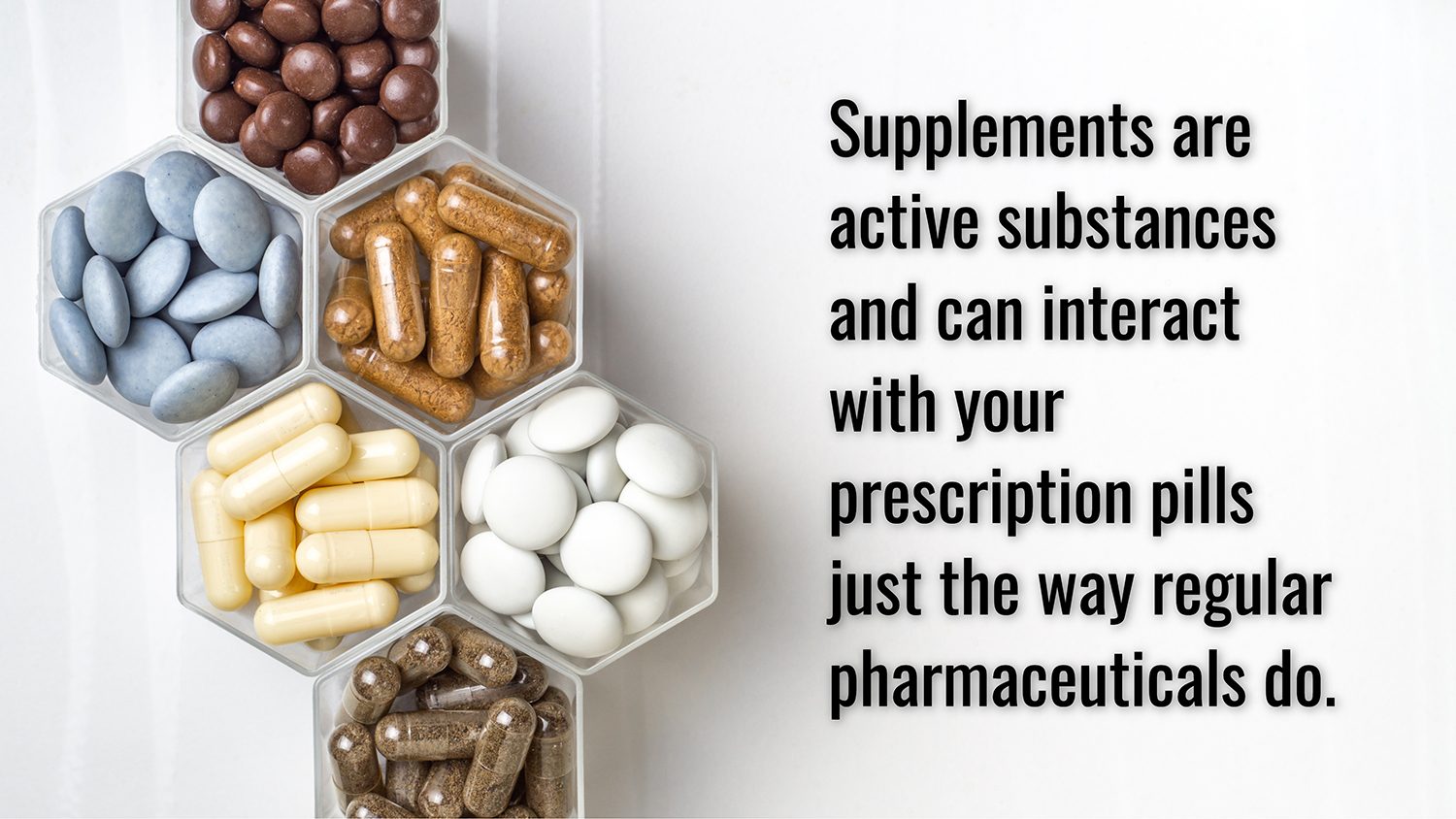
The Problem With Supplements
So how can it be that something so innocuous-sounding as an herbal or dietary supplement can be so dangerous? First of all, about a quarter of supplements may have contaminants in them introduced in the production cycle—heavy metals, for instance, such as lead or mercury. Or pharmaceuticals. As of 2018, over 750 supplements have been found to be tainted with pharmaceuticals, including amphetamine analogues or alprazolam (Xanax).
Second, we may simply not know how exactly the supplement works in the body. Prescription drugs have to undergo lengthy safety trials. Supplements don’t. They are also practically unregulated—in the US, the FDA does not review their safety before they end up in shops. In the European Union, supplements are considered a “foodstuff,” and their control is very difficult, especially considering that many of them are sold online. In Canada, “natural health products”—vitamins, minerals, herbal remedies, and so on—must be assessed for safety by Health Canada, but the process is primarily paper-based, and the evidence submitted by manufacturers doesn’t have to be particularly robust.
Another issue is that of drug interactions and side effects. Supplements are active substances and can interact with your prescription pills just the way regular pharmaceuticals do. And yet, one in six people who take prescription drugs also take at least one dietary supplement. To get into trouble you don’t even have to go as far as the futurist Ray Kurzweil, the very same one who downs metformin to boost his longevity, who takes about 90 other pills a day, including green tea extract, echinacea, and gentian root. Two wrong substances mixed together can be enough to cause problems. St. John’s wort, for example, can cause interactions with high blood pressure medications and with oral contraceptives.
Large, dangerous doses are also a common problem—both with herbal supplements and vitamins. Some toxic substances are basically poisons at high dosages yet beneficial to health in small quantities. This effect, known as hormesis, applies, for instance, to many phytochemicals, compounds that plants produce in order to kill or deter pests. Examples of phytochemicals likely known to many nutrition buffs include glucosinolates (behind the health benefits of broccoli) and tannins (red wine). Although it’s basically impossible to overdose on broccoli due to the physical limits of your stomach—I challenge you to eat more than two or three heads—phytochemicals found in supplements are another story. Some green tea pills sold online in the US, for example, contain a minimum of 274 milligrams of phytochemicals called catechins per pill. The label says you should take three of these a day, which would bring you to a dosage exceeding what the European Food Safety Authority considers a liver damage risk.
Same thing goes for vitamin pills. High doses of vitamin C have been linked to renal failure, and high doses of vitamin E to cancer. According to meta-analyses of studies, taking 400 IU or more of vitamin E per day can actually shorten your life, and so can beta-carotene supplements and vitamin A. Multivitamins aren’t much better, either. In a study of over 80,000 American physicians, those who took multivitamin pills had a 7 percent higher risk of dying from cardiovascular disease than those who didn’t go for such supplements.
One reason for the damaging effects of vitamins may lie in the tricky workings of antioxidants in our bodies. Although often touted as quasi-miraculous substances that can wipe up dangerous free radicals and prevent aging, in reality the antioxidants that we swallow as supplements have much less rosy effects on our cells. More and more research suggests that free radicals are an important part of the body’s repair mechanisms (that’s why exercise is good for you—it produces free radicals). If you dump too many antioxidants in a purified form into your cells, they may end up disrupting these important repair processes. What’s more, they can actually protect cancer cells from free radicals that are trying to get rid of the intruders. Just to be clear: this does not mean that antioxidants found in whole foods are bad for you. On the contrary. The reason for this goes back once again to the difference between mixtures of various naturally occurring compounds interacting with each other to your benefit (as in a carrot) versus purified components (vitamin pills).
Most Fancy Superfoods Don’t Work, Either
If whole foods are much better for longevity than are supplements, maybe superfoods are super-good at boosting health? I decided to check it out. I ventured to a French equivalent of Whole Foods, Naturalia, about a 20-minute drive from my house, taking with me a long list of supposedly extraordinary products advertised on blogs and in health magazines as superfoods. After spending far more money than I care to admit, I came home with a bag full of goodies. The next day was my superfoods day. For breakfast I whipped myself an organic Greek yogurt with mixed berries, oats, and a generous sprinkling of goji berries, plus a cup of matcha and a glass of kombucha (fermented tea). Lunch was a kale and spinach smoothie with freshly pressed orange juice, fresh ginger, turmeric, and baobab powder. I also made myself a whole-wheat bread sandwich with chia seeds and ground flaxseed, topped with avocado and heirloom yellow tomatoes. I sipped some more matcha. For a snack, I had a beet and carrot smoothie with açaí berry juice plus two squares of dark chocolate—raw, of course. Dinner was Tuscan white bean soup with organic whole wheat pasta. And more kombucha. I was either going to turn into a superwoman or end up with a super-upset stomach.
I have to admit: at first I was quite pumped up. Just thinking of all these superfoods circulating around my body and perking up my cells made me feel energetic. As the day went on, though, I found myself craving cookies and fries. Like, I-can’t-think-of-anything-else craving. What’s more, by evening I was as tired as befits a working mother—basically the level of exhausted I reach on most days. Oh, well.
Of course, my experiment was extremely short and certainly could not qualify as anything scientific, not even close. Active substances in foods need time to do all their good work in our bodies, and one day is simply not enough. One could also argue that I didn’t superfood myself sufficiently. Admittedly, the availability of superfoods in rural France falls short compared to, say, metropolitan US. There I could have also gone for moringa leaves, powdered durian fruit, manuka honey, ashwagandha powder, shilajit powder, Irish moss, or reishi mushrooms. My initial feelings of energy boost were quite likely the placebo effect at work. What I’ve also learned is that chasing superfoods takes a lot of effort and time—and money. And once I stopped whipping up baobab powder smoothies and started reading research studies and talking to scientists, I discovered that even if I did extend my superfoods day into a superfoods week or even a superfoods month, quite likely nothing much would change anyway. That’s because most fancy superfoods don’t really work.
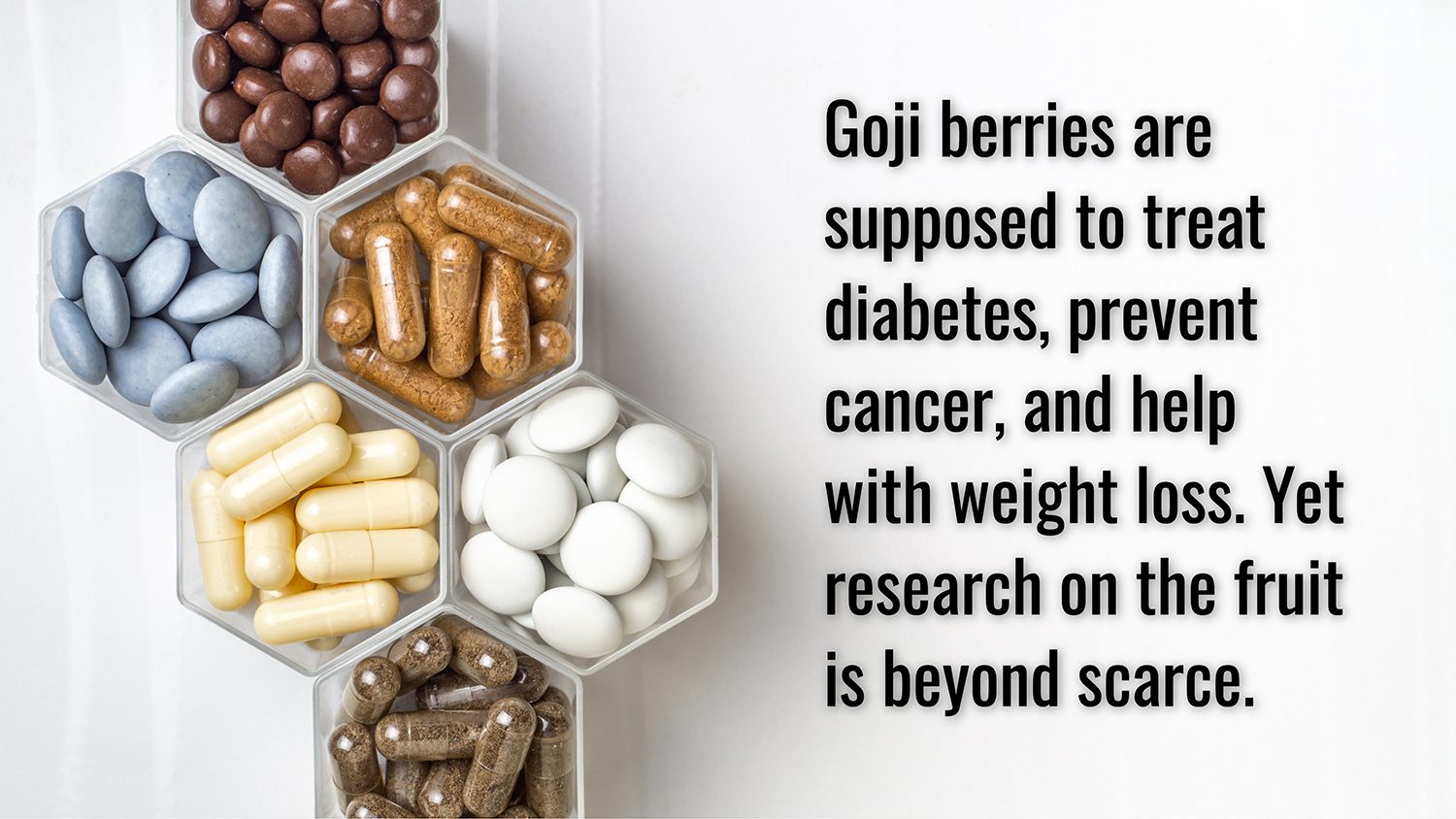
The Truth About Superfood Research
If you are into longevity and health news, you may find it hard to follow all the headlines on superfood discoveries. I certainly do. One day it’s goji berries, the next day it’s matcha. What’s all the rage right now, for example, is leaf powder from an Indian tree called moringa (M. oleifera). It’s loaded with protein and iron, and is supposed to lower cholesterol, protect the cardiovascular system, and reduce inflammation. Hence moringa is being added to everything from nutrition bars and protein powders to juices and chips. Yet I couldn’t find any reliable studies on moringa’s health benefits. As one Canadian researcher has written, “The enthusiasm for the health benefits of M. oleifera is in dire contrast with the scarcity of strong experimental and clinical evidence supporting them.” Same thing with goji berries, also known as the “Himalayan longevity fruit.” Goji berries are supposed to treat diabetes, prevent cancer, and help with weight loss. Yet research on the fruit is beyond scarce. The vast majority of trials have been led by the same person, an employee of a company that produces goji juice. Talk about conflict of interest.
Another alleged miracle food, a yellow spice called turmeric, also doesn’t stand up to scrutiny. Even though there do exist quite a few trials reporting benefits of its chemical component curcumin, most of them are erroneous signals. Curcumin has been classified as belonging to a group of compounds called “pan-assay interference compounds” (PAINS); when scientists screen chemical compounds looking for new drugs, pan-assay interference compounds tend to give false positive results because of their tendency to react with a wide variety of biological targets. A 2017 review published in the Journal of Medicinal Chemistry summed up the supposed miracle properties of curcumin quite simply as “much ado about nothing” and warned that the compound can “trick unprepared researchers into misinterpreting the results of their investigations.” Curcumin is basically a “con artist” of the chemical world, showing false activity in poorly designed studies. So far no double-blinded, placebo-controlled clinical trial involving curcumin has been successful.
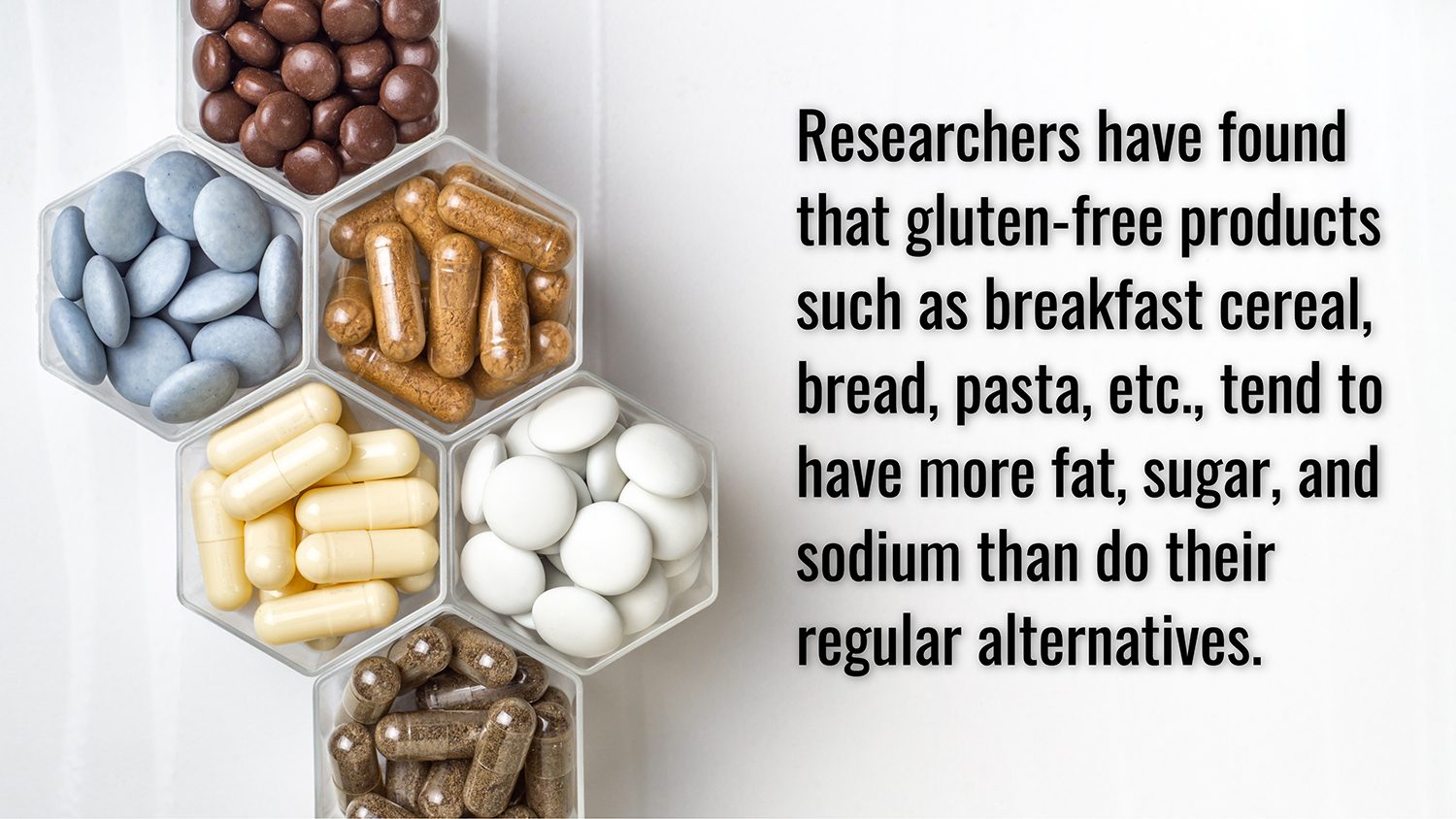
Think Twice About Exclusionary Diets
Just as adding fancy superfoods to your diet may not be the best idea, removing large groups of otherwise healthy products from your menu is also not the way to go if you want to boost your longevity. Even though the prevalence of celiac disease stays well under 1 percent in the US, a quarter of Americans say they avoid gluten. Among those, 35 percent do so for “no reason” other than the belief that gluten-free foods are somehow healthier. They are not. In one investigation of over 1,700 products available on the British market, researchers have found that gluten-free products such as breakfast cereal, bread, pasta, etc., tend to have more fat, sugar, and sodium than do their regular alternatives.
Other research has also found that they contain lower amounts of some vitamins. Instead, they tend to have more heavy metals. Blood and urine samples of people on gluten-free diets reveal they may have 47 percent higher levels of mercury and 80 percent higher levels of arsenic. To make foods without gluten, a great food texturizer, you need to process them more, often spiking them with additives. As a result, epidemiological research shows that people who habitually eat low amounts of gluten tend to have more diabetes and more coronary heart disease than those who eat more of it.
In general, if your diet excludes large numbers of items that are conventionally considered to be nutritious (fruits, vegetables, etc.), there is a good chance this diet is a fad. Before you ask—vegetarianism is not among them. For one, it only eliminates a single type of food, meat; but also, there is a substantial amount of research showing that going meat-free can significantly prolong your life. One study done in California has shown that vegetarians may live longer than others: an average of 9.5 years for men and 6.1 for women. Adding three ounces (85 g) of red meat to your daily diet, above what you normally eat, elevates the risk of death from cardiovascular disease by 16 percent over the next two to three decades of your life. If you exercise every day for 20 minutes to keep your heart healthy, that three ounces of bacon or steak may undo your entire effort.
If gluten-free eating doesn’t make sense for most non-celiac people, if superfoods are not so super after all, and high-protein diets can hurt your longevity, then what should you eat to stay healthy? The answer is, I’m afraid, boring: lots of fruits and veggies. And they don’t have to be exotic—so not rambutan or pitaya, unless you happen to live in southeast Asia. Just cabbage, tomatoes, broccoli, spinach, apples. The cheap, ordinary stuff. And you don’t even have to go organic.
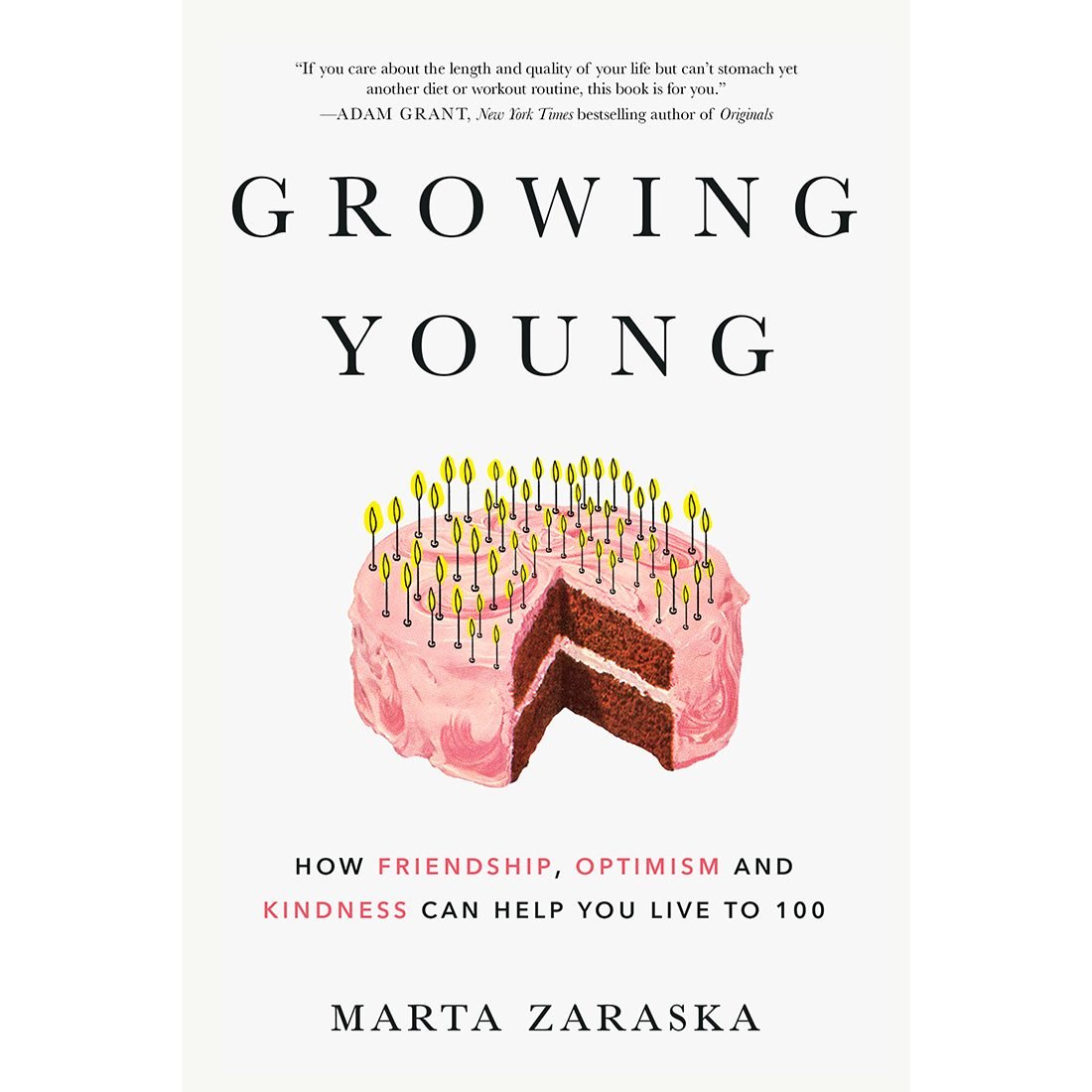
Excerpted from Growing Young: How Friendship, Optimism, and Kindness Can Help You Live to 100 by Marta Zaraska. Copyright © 2020 Marta Zaraska. Published by Appetite by Random House®, a division of Penguin Random House Canada Limited. Reproduced by arrangement with the Publisher. All rights reserved.
Next, check out these expert tips on how to live to 100—and love it!
Shortly after their honeymoon in 2001, Christian Bouvet felt something was amiss with his wife, Myreille. When the pair had been back at their home in Montreal for a couple months, Myreille, who works as an artist and in communications, had become distant and more emotional than usual. She cried often; once, Christian came home to her curled up and cowering in the corner of their apartment.
“I couldn’t understand why she felt bad when there was no obvious cause for it and our life was going so nicely,” the 52-year-old remembers. Knowing little about mental health challenges, he tried to remain calm and assured by his wife’s side, but he felt at a loss for how to help her. “I had hoped she would get through it herself,” he says.
A psychiatrist eventually prescribed some medication for Myreille, which was intended to improve the then-44-year-old’s condition within weeks. But three months passed, and her depression worsened. She began losing hope that she could feel better. Bouvet says she stopped going out, opting instead to sit alone at home. Eventually she was hospitalized. Bouvet struggled to stay positive and was unsure how to navigate the situation.
Given that about one in four Canadians will suffer depression serious enough to need treatment during their lifetime, a large number of us will at some point be in a position to offer support. Here are some tips on how to help someone who is depressed.
How to Help Someone Who is Depressed
Learn to spot the signs of depression
Depression is so ubiquitous, says Toronto professor of clinical psychology Robert T. Muller, that it’s sometimes referred to by professionals in his field as “the common cold of mental illnesses.” Despite this fact, it’s not always recognized by sufferers or their family and friends.
Part of the difficulty is the multifaceted nature of the condition. “It’s a diagnosis that has so many causes,” Muller says. “And it shows differently in everyone.”
In fact, signs of depression can manifest from four areas of an individual’s health: behavioural (self-isolation and avoidance), physical (body aches and headaches), cognitive (feelings of failure or guilt, and suicidal thoughts) and emotional (sadness and anxiety).
Muller recommends keeping an eye on changes in a loved one’s demeanour. They may be depressed if they’re usually outdoorsy and extroverted but start spending more time cooped up at home, and rarely return calls or texts. Muller suggests approaching initial conversations by telling the depressed person that you care about them and have noticed changes in their moods and behaviours. An open and honest dialogue, he says, is often the first step toward treatment.

Start with compassion
According to Bart Campbell, an educator for mental health and wellness at the Mood Disorders Association of Ontario, people suffering from depression often feel their condition isn’t taken seriously. Some might think, for instance, that their loved one just needs to get out of bed to feel better.
Instead, Campbell says, it can help to reinforce that you understand depression is an illness and not something they can choose to overcome. “You wouldn’t tell someone with a broken leg to just get up,” he says.
When attempting to provide ongoing support, Campbell recommends beginning with open-ended questions: what are you feeling today? In what ways can I help you right now?
And even if you have been through depression, it’s best not to make any assumptions. “When we personalize the disorder—when we assume we know what they’re going through based on our own experiences—we lose the opportunity to learn their experience.”
Anna Mehler Paperny, whose struggles with depression are described in her memoir, Hello I Want to Die Please Fix Me, says the best support can sometimes be practical: calling in the morning to make sure they’re awake for work, going on a half-hour walk with them every day or picking up some groceries for them. “If you’re noticing someone having trouble with basic aspects of life,” she says, “offering help in a natural way can feel life-changing.”
Here’s expert advice on how to be a more compassionate person.
Take care of yourself
The stress of caring for someone with depression can take a toll on your own health—and depressed people sometimes act out and become angry with their caregivers. That’s why Campbell says it’s important to take time to set boundaries and seek your own support.
The Mood Disorders Society of Canada and the Canadian Mental Health Association offer recovery groups across Canada, where sufferers and their relatives can work together. In these groups, those with depression and their support network are educated about how to manage a mood disorder and build plans to cope with the illness in the future.
If caregivers can’t make it to a support group, Campbell recommends making time for pleasant activities that bring relief from the emotional labour. “You can’t always be on,” Campbell says. “It’s important to take time to refuel.” (Don’t miss these self care tips for caregivers.)
Mehler Paperny knows first-hand that it can be difficult to be around someone with depression, and sometimes space is necessary. But she says help can come in small ways—a short phone call or even sending a text message to check in can make a difference. “Being a presence in a depressed person’s life can help them feel loved and wanted,” she says.
Muller adds that it’s most important that you avoid becoming a stand-in psychologist. While it’s crucial to listen and express affection, he advises that trying to mimic therapy without actually having training often ends in frustration. Instead, encourage your loved one to see a professional, and do so regularly.
With her doctor’s help, Myreille recovered from her post-honeymoon depression, which, it turns out, was caused by a severe chemical imbalance. Then, a year and a half ago, she relapsed after nearly 15 years of managing her depression. Bouvet found comfort in the knowledge he’d gained of how to navigate his wife’s depression in the medical system. And this time, he also surrounded himself with friends and family for his own support. “You have to know that you can’t get through it alone,” he says.
Now that you’re familiar with these tips on how to help someone who is depressed, check out 10 mental health podcasts worth adding to your playlist.
Chances are, most of us as kids experienced an adult’s reprimand not to pick our nose…but in 1995, one psychiatry study proposed that more than 91 percent of adults dig for green gold. The world has changed since that study was conducted…but has human behaviour? Here’s reason it should: Recent research has suggested nose-picking may be worse than just a social faux pas.
A 2022 Australian public health study in mice published in the peer-reviewed journal, Scientific Reports, found that this unhygienic habit may increase your chances of developing age-related memory problems, including Alzheimer’s disease.
We spoke with the study’s lead researcher, and here’s why he and his team think this may happen: Picking your nose can damage its internal tissues, opening pathways for bacteria to access your brain. There, these bacteria can cause changes to your brain and nervous system that are associated with Alzheimer’s disease.
Here’s how the researchers reached this conclusion: Studies in mice showed that bacteria called Chlamydia pneumonia can travel up the olfactory nerve that links the nasal cavity and the brain. The bacteria use this nerve like a fireman’s pole and invade the central nervous system. Brain cells respond by depositing amyloid beta plaques, markers of Alzheimer’s disease, in the brain.
“There is a strong link between some microorganisms and Alzheimer’s disease because the microbes have been detected within the plaques of Alzheimer’s disease patient brains,” study author James St. John, PhD, tells The Healthy @Reader’s Digest. Dr. St. John is head of the Clem Jones Centre for Neurobiology and Stem Cell Research within the Griffith Institute for Drug Discovery and the Menzies Health Institute Queensland at Griffith University in Australia.
Now, Dr. St. John and his colleagues are setting up a smell clinic to find out which bacteria are present in the noses of people with late-onset Alzheimer’s. They plan to use this information to work on treatments to reduce the effect of these bacteria and reverse symptoms.
So while nose-picking might seem like an impolite but rather innocent habit, Dr. St. John says there are ways to protect your health as researchers try to clarify the link between nose picking, bacteria, and Alzheimer’s disease.
For more wellness updates, sign up for the (free!) Reader’s Digest Health Report.
Don’t pick your nose or pluck the hairs from your nose
This can damage the lining of your nose and help bacteria hatch their escape plan. “The bacteria could then penetrate in larger amounts into the olfactory nerve and brain,” he says. “Our work shows that damaging the nasal lining can make it worse, which could happen if you pick your nose too vigorously.”
Linda Dahl, MD, an ear nose, and throat specialist affiliated with Lenox Hill Hospital in New York City, says that for people who pick because their nose is dry, try using a saline spray or blowing your nose more often. “Use a little bit of Neosporin or another antibacterial ointment at the rim of the nose twice a day,” Dr. Dahl says, “where it can add moisture and kill bacteria.”
Find out how a new blood test can detect your Alzheimer’s risk with 96 percent accuracy.
Other smart ways to prevent Alzheimer’s disease
According to research presented at the American Academy of Neurology 2023 meeting in Boston, seven specific habits and lifestyle factors may play a role in lowering dementia risk. The American Heart Association’s “Life’s Simple 7” program includes being active, eating better, maintaining a healthy weight, not smoking, maintaining healthy blood pressure levels, controlling cholesterol, and having normal blood sugar.
You get one point for each healthy habit for a maximum of seven points. The higher your score is in middle age, the experts say the lower your risk of developing dementia down the road. For every increase of one point in the score, the risk of dementia decreases by 6 percent.
Keeping your hands away from your nose may be one way to keep your brain healthy. Another? Paying attention to what you put in your mouth: Experts say that what’s good for the heart is good for the brain, and a heart-healthy diet rich in omega-3 fatty acids, lean protein, fruits, vegetables, and whole grains may reduce Alzheimer’s risk by 53 percent.
Need another reason to keep your digits out of your nose? Germs that enter the nose can also increase your risk of miserable respiratory infections like flu, COVID-19 or even pneumonia.
Next, find out how this MIND Diet meal plan slashes your Alzheimer’s risk.

I read an article once pointing out that with the demise of the one-room schoolhouse, the country lost a unique type of student that we will not see again. Like the forgotten sound of a lonely steam engine crossing a valley, the children of the old country schools with their camaraderie and close relationships are sadly, lost relics of the past.
Memories of the One-Room Schoolhouse
I graduated from Grade 13 at Dutton High School and after spending one year in Toronto Teacher’s College, I took a position as teacher at S.S. # 1, a one-room schoolhouse in Aldborough Township, on Highway #3 near West Lorne, Ontario. I lived in West Lorne and was able to easily drive to and from school.
I remember the teacher who had taught before me saying as she left, “Good luck in your teaching. All my mistakes are here.” That was actually not as bizarre a statement as it sounds, since most of us took these jobs in country schools, fresh out of high school and with one year of teacher’s training, hoping that in time we would advance to greener pastures and larger academic institutions.
That first day of school as a 19-year-old teacher was a frightening prospect. It was one thing to have graduated from Teacher’s College as a successful student; it was another thing to face a classroom of little faces who were waiting to size up the “new teacher.” I had a classroom of 21 children of varying shapes and sizes. The youngest was five going on six, the eldest was 16 and fresh out of reform school! This one took special handling as I was only three years older than he was.
Because I had a degree in music, I was given $200 more per year, since I could teach that subject and thus avoid bringing in an outside instructor. This brought the grand total of my yearly salary in 1953 to $1,800.
There were two entry doors in my school, one for the girls, one for the boys, and just inside each door was a chemical toilet—no outdoor facilities for us!
In the autumn, a farmer would dump a load of wood at the back of the school and the students and I would be expected to go out and pile it up. The heat in the building was a big, wood-burning furnace down in the basement and the hot air came up through a large vent in the middle of the schoolroom. On cold days, I loved to stand on that vent and let the warm air circulate around me. Once, I sent my oldest student down to throw wood on the fire, as tending the furnace was one of my responsibilities. He piled all the wood he could into the furnace and the room got hotter and hotter. I went down to investigate and was horrified.
Luckily, I knew a bit about dampers and such, so the school did not burn down.
Taking Charge
Attendance was a matter of much more importance back then than it is now, when a parent may take a child out of school for any reason. Children were expected to attend regularly. I had one Dutch family, whose father would keep them out of school whenever he chose, to help with the farm work. This, of course, meant that they were always lagging behind the other students. Finally, I got fed up with this and sent the Truant Officer to straighten out the problem. Needless to say, I was very unpopular with that father from then on, but the children came to school much more regularly!
One of the most nerve-racking times was when the Inspector made his yearly visit to see if my teaching was up to standard. All the children were admonished to be very attentive and to think before they answered and I do not recall any bad reports of my instructions, but looking back I am amazed at how frightened we all were, teacher and students alike. What a power trip for this austere gentleman!
The Lighter Side
Every Christmas we held a concert in which all the students took part and which was attended by the entire community. I often felt this concert was the criteria by which my success as a teacher was measured. Still, it is a fact that preparing for the various presentations and working together to make it a success was a learning experience in itself. Holidays such as Thanksgiving, Valentine’s Day and Easter were all were good excuses to have a party and what fun it was!
I recall the time I decided to make pumpkin pies, enough for everyone to have a piece. I worked until late at night and left them to cool on the kitchen table. In the morning, I came out to admire my work only to find that my two kittens had carefully stepped across each pie! I sat down and cried, but my husband, who was quite a practical man, took a knife and smoothed over the surface of each pie and no one ever knew.
In warmer months, we could hold classes outdoors and eat lunch outside as well.
Across the road from my school lived a farmer who raised pigs and each spring the baby pigs would come to the fence to look at us and shake their little tails. I have had a fond spot for little pigs ever since then.
In the classroom, the concepts of sharing, helping and cooperation were instilled from the very first day. The older students helped the younger ones with learning, as well as with putting on coats, galoshes, hats and scarves. If someone’s lunch was forgotten, everyone shared a bit of their food. On rainy days, we would all, teacher and students alike, stayed inside at recess or noon hour to play games or tell stories. We were a family; we had good times and bad times and arguments and peace talks, but we kept learning. Far beyond arithmetic, social studies, reading, grammar and writing, we learned how to get along and to sort out our differences in a way that today’s world desperately needs to adopt. Even though I was a friend to each child, in a different way for each depending on ages, needs and personalities, I also expected and was given respect and obedience without any feeling on their part that this was encroaching on their individuality. I’m sure some of these small schools had poor teachers who cared little for the children and for whom this was just a job, however, the vast majority of us taught because we loved it and knew we were instructing the children in life as much as in subjects. I like to believe we turned out students who have made an impact on the world that will last long after we are gone.
Lessons Learned
I did not spend a lot of years teaching in a one-room schoolhouse. I retired to start a family then returned to university to obtain a Bachelor of Arts degree and to go on to teach in a secondary school.
As I look back on those early “green years” of teaching however, I realize that I learned as many lessons as my young students, including life lessons, and love for my fellow man, which have followed me all of my life. For me, too, “All my mistakes were there,” but more importantly a lot of my successes were there as well. Indeed, the world has lost a beautiful gift in the disappearance of the old eight-grade, one-room schoolhouse.
Next, find out what it was like growing up in an Eaton’s catalogue mail-order house.
